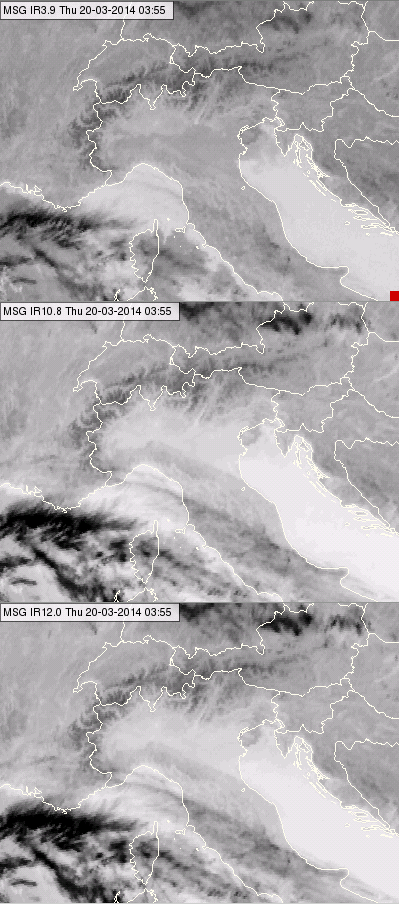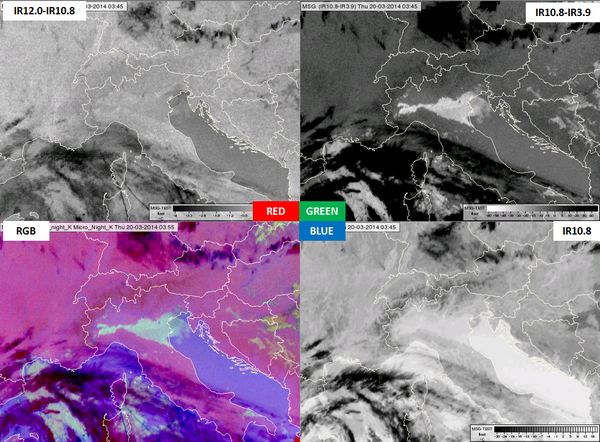Creating Night Microphysics RGB images
The 'recipe' of the Night Microphysics RGB is summarized in Table 1. It shows which channels or channel differences are visualised in which colour. The measured values should be first calibrated to brightness temperatures. The channels or channel differences should be then enhanced - linearly stretched - within the brightness temperature ranges shown in the table.
Table 1: 'Recipe' of the Night Microphysics RGB
| Colour beam | Channel | Range [K] | |
|---|---|---|---|
| Red | IR12.0 - IR10.8 | -4 | +2 |
| Green | IR10.8 - IR3.9 | 0 | +10 |
| Blue | IR10.8 | +243 | +293 |
The following example shows how the Night Microphysics RGB is combined from the three IR channels. Fig. 2a shows the three IR channels separately as single channels, all enhanced in the 243-293 K brightness temperature range. Usually the IR images are visualized in the grey scale by assigning bright shades to cold and dark shades to warm objects. However, in Fig. 2a the warm objects (surface, warm clouds) are bright and the cold clouds are dark. The colder the object, the darker it is in these images.
In Fig. 2a the Po valley was coved by fog. This fog is not seen in the IR10.8 and IR12.0 images. In the IR3.9 image one might suspect the presence of the fog. As mentioned, the transparency of cirrus clouds is dependent on wavelength; see for example the thin cirrus clouds across the Apennines. They are the least dark (the most transparent) in IR3.9 image and the darkest (the least transparent) in the IR12.0 image.
| Figure 2a: IR3.9 (up), IR10.8 (middle panel) and IR12.0 (below) images for 20 March 2014 at 03:55 UTC |

|
Fig. 2b shows the colour components of a Night Microphysics RGB image: the channel (differences) which are in the recipe with the corresponding enhancement. The lower left panel shows the Night Microphysics RGB.
- In the (IR12-IR10.8) difference image one can easily recognize the semitransparent clouds in the dark shades. However, the fog in the Po valley is not recognizable. The thick water or ice clouds are similar to the surface in this image.
- In the (IR10.8-IR3.9) difference image the surface is medium gray, the water clouds (fog) are much brighter, while the thin ice clouds are dark. The fog in the Po valley has an excellent contrast against the cloud free area.
| Figure 2b: IR12.0-IR10.8 (upper left), IR10.8-IR3.9 (upper right), IR10.8 (bottom right) and the Night Microphysics RGB (bottom left) images for 20 March 2014 at 03:55 UTC |

|